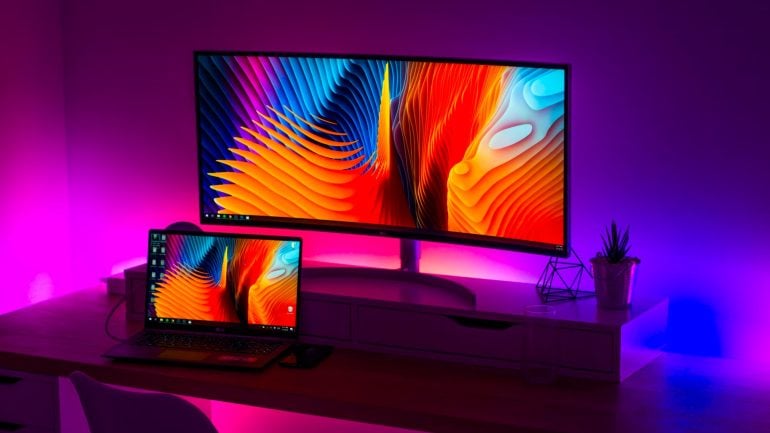Are 16:9 monitors failing to quench your thirst for screen real estate? If you’re yearning for an even wider canvas, the allure of ultrawide displays beckons. Enter the realm of 3440 x 1440 resolution, a captivating choice that ushers in a panoramic viewing experience. However, before you plunge into the world of ultrawide wonder, let’s delve into the essentials that will empower you to make an informed decision.
Allure of 3440 x 1440 resolution and 21:9 aspect ratio
With an ultrawide aspect ratio of 21:9, the 3440 x 1440 resolution unveils a new realm of visual immersion. This resolution, alongside its 2560 x 1080 counterpart, stands as the flagbearer of the 21:9 aspect ratio. Diverging from the commonplace 16:9 ratio embraced by most modern monitors, the 3440 x 1440 resolution asserts a 29.3% increase in width over its 2560 x 1440 counterpart. Embracing this resolution propels you into a world where multitasking and cinematic experiences meld seamlessly.

Is the 3440 x 1440 resolution equal to 4K?
Before delving deeper, let’s clear the air – the 3440 x 1440 resolution is not to be mistaken for the heralded 3840 x 2160, commonly referred to as 4K. While the numerical proximity might elicit confusion, the distinction is substantial. With 4,953,600 pixels, the 3440 x 1440 resolution pales in comparison to the 8,294,400 pixels of 4K, marking a 50.4% disparity or 3,340,800 pixels! Furthermore, while 4K adheres to a 16:9 aspect ratio, the 3440 x 1440 resolution proudly upholds its 21:9 widescreen essence.
Embracing 3440 x 1440 for gaming
Venturing into gaming territory with 3440 x 1440 resolution entails both intrigue and contemplation. Though this resolution might not be the gaming norm, it offers an immersive escapade that a handful of monitors cater to, albeit at a higher price point. The allure of curved monitors only heightens the immersion factor. Yet, before embarking on this gaming odyssey, a fundamental question arises: Can your graphics card manage the pixel influx?
Conduct thorough research by perusing benchmarks for your graphics card operating at this resolution. This step unravels the potential impact on frame rates, which can vary depending on the game and its settings. Holding system specifications and in-game settings constant while comparing performance between 2560 x 1440 and 3440 x 1440 resolutions can unveil insights into the potential framerate impact.
For instance, analyzing Rise of the Tomb Raider benchmarks reveals an average frame rate decline from 114 to 94 FPS while transitioning from 2560 x 1440 to 3440 x 1440—a substantial 17.5% drop. This evidence underscores the significance of scrutinizing your graphics card’s capabilities to ensure a seamless gaming encounter devoid of unwelcome surprises.
In the ever-evolving landscape of visual fidelity, the 3440 x 1440 resolution stands as an entrancing gateway to immersive displays. Its panoramic embrace, though slightly obscure, offers unparalleled multitasking and cinematic marvels. However, the decision to embrace this resolution for gaming necessitates a prudent assessment of your graphics card’s prowess. As the digital canvas expands, so does the potential for visual splendor.


